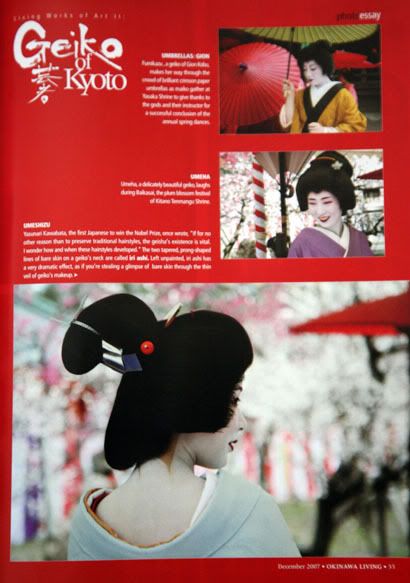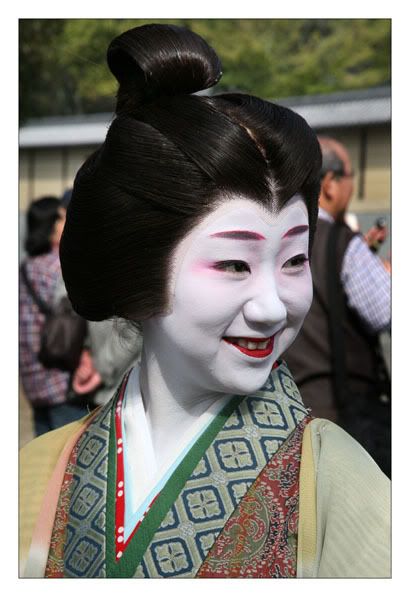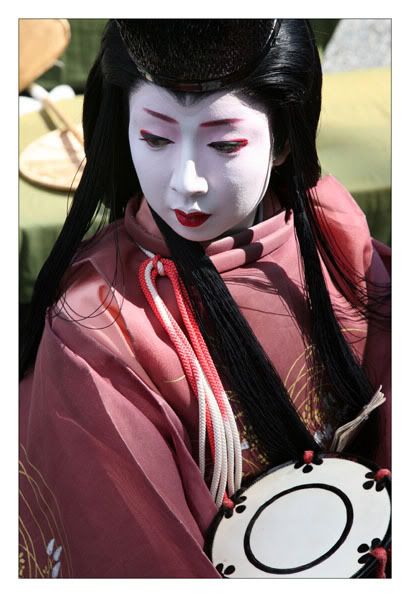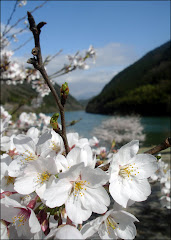Sunday, December 30, 2007
An Aya Uto Christmas: Silent Night and Christmas Cake
"Super Idol" singer and actress Aya Ueto sings Silent Night for a Softbank cell phone commerical. Don't miss the classic Japanese Christmas cake at the end!
As an American raised in a predominantly ethnic Italian influenced family, I had never heard of "Christmas cake" before traveling to Japan. I'm interested in knowing which cultures celebrate Christmas with cake. Please share your traditions with us in the comment section!
Saturday, December 29, 2007
♫♩♪♫ Wii! Merry Christmas ♫♩♪♫




Sunday, December 23, 2007
Merry Christmas Maid Cafe
Sneek a peek at this trendy, invite only fashion show cum Christmas party held at a popular maid cafe in Tokyo. Marvel at the sexy sweet servant style. Wince at the high pitched voices and childish cuteness. Behold: Japan at it's weird and wonderful best!
Saturday, December 22, 2007
"Tokyo Sanka" English Translation: 東京賛歌 : Bump of Chicken

Bump of Chicken = Best Japanese band. EVER.
*****
Tokyo Hymn (Tokyo Sanka)
It's a town with sky and earth
How is it different from the town where you grew up, I wonder?
Why can you tell the difference, I wonder?
I guess you've been taught since you came here
Things like all the lies, the cold, not being able to see the stars,
A storm of troubles
It's the revenge of things not going well, I guess
You started and quit so many here
What was it that you came here to do?
For whose sake was it?
Roads and railroad tracks are connected but... that's so but...
Jump out as you please, struggle along as you please
This town is all that you know
The drawer of your abandoned dream
Back then they were always nearby
The people you hate and like
Nowadays, do you care?
I guess you realized since you came here
No matter where a person goes
They are same as always
Separated from somebody and separated from yourself
You're alive!
Chosen as you please, hated as you please,
This town is all you have
The place where you, who can't go home, are
There are lots of lies everywhere, don't you think?
After all, when you can see the stars, you lose interest, right?
Among all the people passing one another by,
I think there are more than a few who came here
For similar reasons
What was it that you came here for?
Who was it that decided?
The earth and the sky are connected
The future and the past,too
You jumped out as you pleased, struggle along as you pleased
This town is all you know
The continuation of the dream you got back
Chosen as you please, hated as you please
This town is all you have
The place where you, who can’t go home, are
This town is all you have
The way back home to the place you grew up…
Wednesday, December 19, 2007
Jidai Matsuri 2007: Abutsu Ni
 The geiko Mao of Gion Kobu peeks out from beneath her uchikatsugi as Madame Fujiwara Tamie, also known as Abutsu Ni, in Kyoto's famous Festival of Ages.
The geiko Mao of Gion Kobu peeks out from beneath her uchikatsugi as Madame Fujiwara Tamie, also known as Abutsu Ni, in Kyoto's famous Festival of Ages.
Friday, December 14, 2007
Wednesday, December 12, 2007
Jidai Matsuri 2007: Momoyama Period Style

Yukako, maiko of Gion Kobu, makes a few last touches to her makeup before the procession begins.
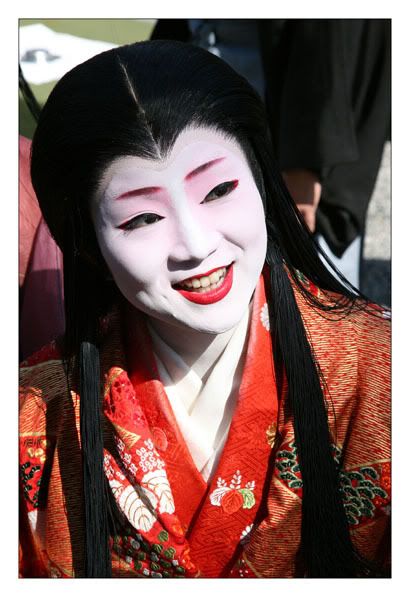
The geiko Suzuko flashes a stunning smile as Yodogimi, a favorite concubine of Toyotomi Hideyoshi.
 Makiko, maiko of Gion Kobu, also served as a Lady-in-Waiting to Yodogimi (Suzuko).
Makiko, maiko of Gion Kobu, also served as a Lady-in-Waiting to Yodogimi (Suzuko).
Yukako smiles sweetly as she chats with friends.
 Sakiko, another young maiko of Gion Kobu, shades herself with an elaborate fan.
Sakiko, another young maiko of Gion Kobu, shades herself with an elaborate fan.
Tuesday, December 11, 2007
Kojima Yoshio : English Teacher!
Comedian Yoshio Kojima trys his hand at teaching English...
**************************
Woman: (Hoping for help from Kojima, she reads him her homework)
Kojima: Wow, you're horrible! That's not even close!
Woman: It's been so long since I read English...
Kids: Well then, you read it!
Kojima: Shall I read it for you? That's not smooth at all, and there's so much space between the words foreigners will never understand you!
Woman: Well then, Mr. Kojima, if you would, please...
Kojima: (Brilliant English-- no translation needed!)
Woman: What language is that?
Kojima: It's English!!!
♪♪♪ Acutally I can't read English、but that doesn't matter! ♪♪♪
Hai, OPPAPI!
*(Note: Oppapi supposedly stands for "Ocean Pacific Peace". Does that explanation sounds dubious to anyone else?)
...And Japanese!
Kojima attempts to help a young boy learn a kanji, or Chinese character...
Koijima: This is the character "naku", "to cry," Ok?
Boy: Naku (to cry).
Kojima: Naku. To Cry. This is easy. Umm... (baby cries) will you be quiet? Uh... first, WHOA! Don't pull my undies down, OK?! That's dangerous!
(Begins to draw) This is a crying... Do you got it? It's a crying person. Crying. He is crying. Crying. Cryin'. Cry crai cra crr cr... CRYING!
(Kojima shows the progression of the kanji from picture to pictograph)
Boy: I still don't quite understand...
Kojima: You still don't understand? Ok, but this is how I got into Waseda...
Wow. When you explain kanji like that, it really starts to make sense! I bet naku is one kanji that boy will never forget.
Much thanks to Japan Probe for always bringing the best of Japanese TV to the blogsphere, and for being a much cooler blog than this will ever be. m(- -)m
Saturday, December 08, 2007
Jidai Matsuri 2007 : Yokobue

Komomo, geiko of Miyagawa-cho, as Yokobue.
A low-ranking lady-in-waiting, Yokobue fell in love with Takiguchi-no-Tokiyori, a warrior of the Imperial Palace. The first time Tokiyori saw Yokobue dance at a hanami party he decided at once that he wanted her for his wife. When his family rejected her, the warrior sought solace by becoming a priest. Yokobue traveled to see Tokiyori, but he refused to meet her because he had already taken his vows. Stricken with grief, Yokobue drowned herself (as many Japanese heroines are rumored to have done). Before leaving, she wrote her true feelings in her own blood on a rock still standing before the gate of Takiguchi-dera, on the same site where Tokiyori took refuge so long ago.

Friday, December 07, 2007
Jidai Matsuri 2007: Ono No Komachi

Fukuaya, geiko of Miyagawa-cho, as Ono no Komachi.
Immortalized as one of the best waka poets of her day and a rare beauty, Ono no Komachi is Japan's earliest and best example of a passionate woman poet. Although they were written over a thousand years ago and can be read in a matter of minutes, the handful of her verses that survive today have been celebrated and studied for centuries, transcending time and culture to move and inspire people all around the world.
One of her poems is also included in the Hyakunin Isshu, a famous anthology of waka poetry also used in uta-garuta.
花の色は
The hue of the cherry blossoms
have faded
Gazing meaninglessly
at the long rain,
I grow old
It may be hard to fully appreciate Japanese poetry without an understanding of the subtle puns and play of words lost in translation. In the poem above, Komachi uses the word furu to connect the idea of growing old to the falling of the rain, and the word nagame to the idea of gazing to the long rains.
Here are a few of my favorite Komachi poems:
Although my feet never cease running to you
On the path of dreams,
The sum of all those meetings
Is less than a single waking glimpse.
******
Did he appear
Because I fell asleep
thinking of him?
If only I'd known I was dreaming
I never would have wakened.
The autumn night
is long only in name
We've done no more
than gaze at each other
and it's already dawn
*****
Yeilding to a love
That knows no limit,
I shall go to him by night--
For the world does not yet censure
Those who tread the paths of dreams
You can read all 22 of her surviving poems here. Which is your favorite?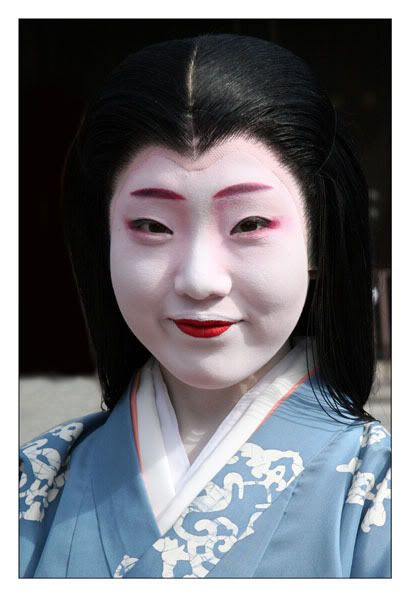
Fukunami, a young geiko of Miyagawa-cho, dressed as a lady-in-waiting to Ono no Komachi.
Tuesday, December 04, 2007
Jidai Matsuri 2007: Shizuka Gozen
Lady Shizuka is one of the most famous and celebrated women of Japanese history. Daughter of a shirabyoshi, or court dancer, Shizuka recieved an invitation from the retired Emperor Shirakawa to dance for the gods, hoping that it would bring an end to a long drought. The chants of a hundred Buddhist monks performances by ninety-nine shirabyoshi had proven useless, but Shizuka's graceful movements acheived the desired effect. The Emperor praised her performance, and it was then that she met the hero Minamoto-no-Yoshitsune.
As a brilliant Genji general in the Gempei War (1180-1185), Yoshitsune's success earned him the distrust of his half-brother, Yoritomo, leader of the Genji clan. In 1185, Yoritomo forced his half-brother to flee and live like an outlaw. Four years later, he was betrayed, and forced to commit seppuku (ritual suicide).

Terukoma waits patiently as stylists make a few last minute touch-ups to her carefully styled wig. She holds a tsuzumi, an hourglass-shaped drum originally taught with fox skin. Played with the tips of the fingers over the shoulder, it produces a distinct "pon" sound. The tsuzumi is used in classical Noh and Kabuki theater and is one of the many traditional instruments studied by geiko and maiko.
Shizuka, pregnant with his child, was captured by Yoritomo. Forced to dance for him, he was so charmed that he agreed to spare her life and that of her unborn child-- if it was a girl. Unfortunately, she gave birth to a son, who was soon killed at Yoritomo's order to prevent the child from seeking vengeance for his father's death later in life. Some say that Shizuka was also killed, some that she became a nun, and others that she drowned herself in a river in despair. She has haunted Japanese art and literature, appearing in everything from Kabuki to manga, ever since.
Saturday, December 01, 2007
Jidai Matsuri 2007: Heian Period
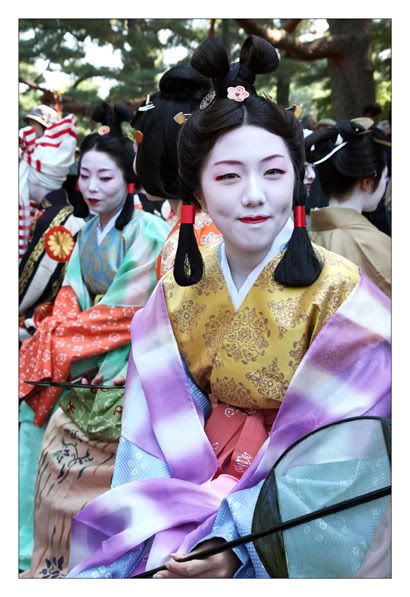
Desperate to separate his court from the growing politcal power of the Buddhist temples of Nara, Emperor Kammu fianlly chose idyllic Yamashiro, surrounded by mountains and blessed with clear water, as the location of his new capital, Heian-Kyo: the Capital of Peaceful Tranquility. Known today as Kyoto, it remained the nation's capital until 1867. Jidai Matsuri, or the Festival of Ages, commemorates his decision, made over 1,200 years ago (October 22, 794).
 Kudara O Myoshin, the wife of a powerful government minister, gained the trust of Emperor Kanmu who honored her with the position of Chief Lady-in-Waiting at the Imperial Court.
Kudara O Myoshin, the wife of a powerful government minister, gained the trust of Emperor Kanmu who honored her with the position of Chief Lady-in-Waiting at the Imperial Court.The Heian Imperial court enjoyed a relatively long period of peace and prosperity lasting nearly 400 years, until 1185. The most influential clan of the era was the aristocratic Fujiwara family who succeeded in dominating the royal family by marrying their daughters to emperors and ruling on behalf of their offspring when they assumed the throne. The Fujiwara controlled politics and cultivated the cultural scene, encouraging an aura of courtly sophistication and sensitivity in all of their activities, including the visual and literary arts and religious practice. This refined sensibility and aesthetic interest is clearly expressed in the literary classic The Tale of Genji, written by a member of the Fujiwara clan known to us today as Murasaki Shikibu.
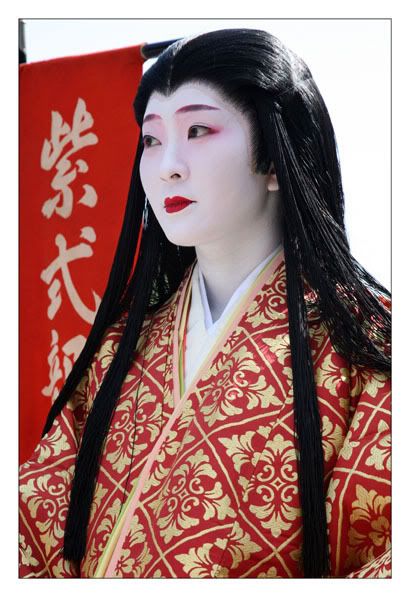
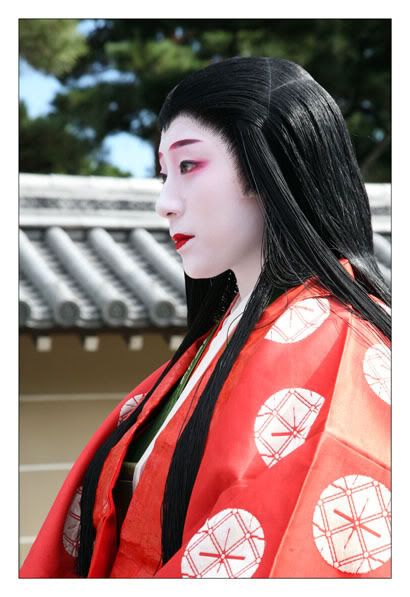
Kikuno, geiko of Miyagawa-cho as Sei Shonagon, contemporary and rival of Murasaki Shikibu and author of Makura no Soshi, "The Pillow Book".





